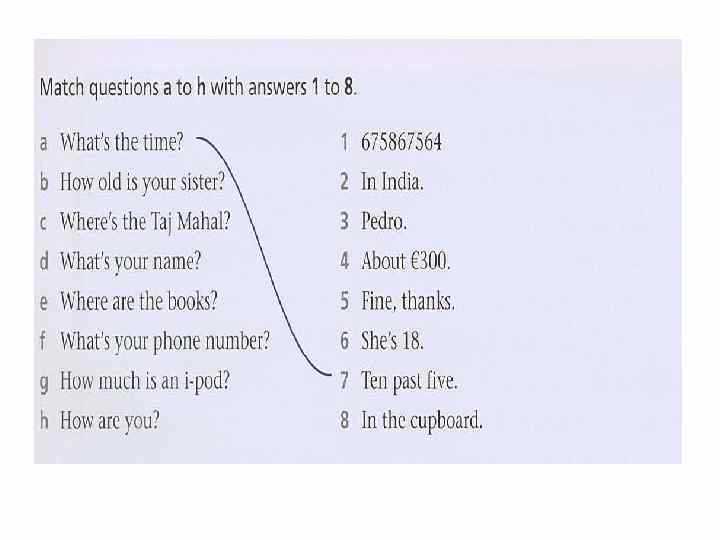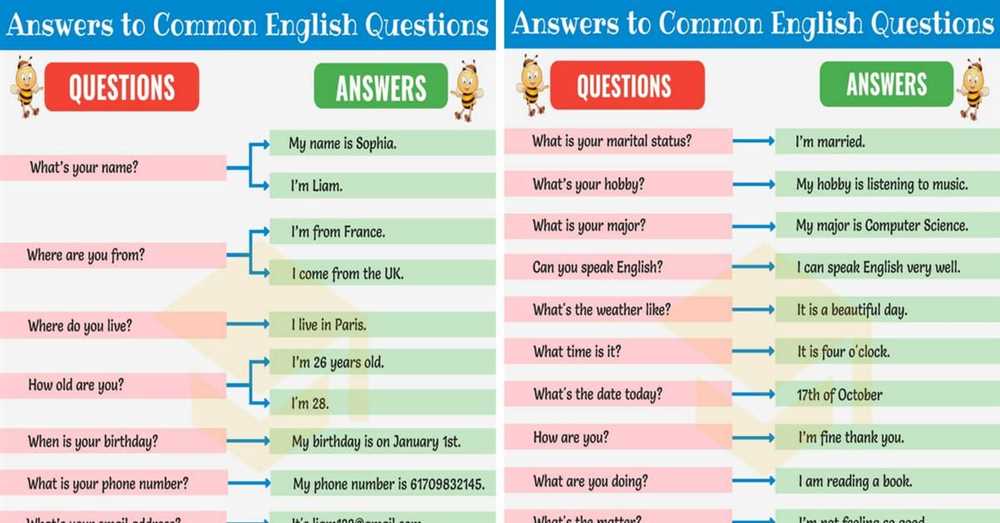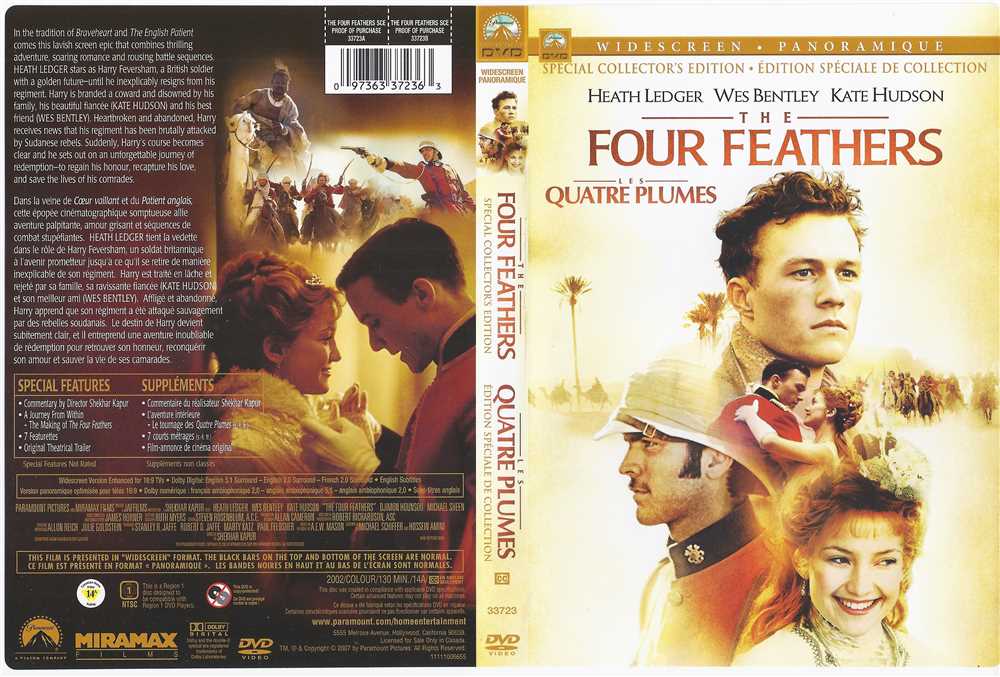
The novel “The Four Feathers” by A.E.W. Mason is a gripping story of honour, bravery, and self-discovery set against the backdrop of the British Empire in the late 19th century. The novel explores the themes of loyalty, sacrifice, and redemption through the experiences of its main character, Harry Feversham. As readers delve into the complex narrative, they are bound to have questions about the characters, plot, and historical context of the novel. In this article, we will provide answers to some of the most frequently asked questions about “The Four Feathers”, shedding light on its key aspects and offering a deeper understanding of this timeless classic.
One of the central questions readers may have is: What is the significance of the four white feathers in the novel? The four feathers symbolize cowardice and the fear of social disgrace, as they are sent to those who are deemed to have shown weakness or lack of bravery. In the novel, Harry Feversham receives four white feathers from his friends as he resigns from his military commission just before his regiment is sent to military action in Sudan. The feathers become a constant reminder of his perceived cowardice and drive the narrative forward as Harry embarks on a journey of redemption, determined to prove his courage and loyalty.
Another question that arises is: What is the historical context of “The Four Feathers”? The novel is set during the height of the British Empire, a time when the empire expanded its influence through military conquest and colonization. The events in the novel take place during the Mahdist War, a conflict between the British forces and the Mahdi-led Sudanese people. This historical backdrop adds depth to the story, highlighting the challenges faced by the characters and the intricate dynamics between the British military, local populations, and the ideals of honor and duty.
Lastly, readers may wonder: How does “The Four Feathers” explore the theme of redemption? Redemption is a central theme in the novel, as Harry Feversham sets out on a journey to prove his bravery and loyalty after being labeled a coward. Throughout the narrative, he faces numerous challenges and dangers, demonstrating his courage and determination. The novel also explores the idea of self-forgiveness and the search for personal identity. The characters’ journeys of redemption offer profound insights into the human spirit and the power of second chances.
The Four Feathers Questions and Answers
In the novel “The Four Feathers” by A.E.W. Mason, a young British officer named Harry Feversham is faced with a dilemma when he receives four white feathers, a symbol of cowardice, from his friends and fiancée after resigning from the army. This leads him on a journey of self-discovery, redemption, and courage. Here are some questions and answers about the key elements of the story:
1. What is the significance of the white feathers?
The white feathers represent cowardice and are given to Harry Feversham as a form of social ostracism and condemnation by his friends and fiancée. They believe that he has acted in a cowardly manner by resigning from the army and refuse to associate themselves with him. The feathers serve as a constant reminder of his perceived weakness and challenge him to prove his bravery.
2. How does Harry Feversham find redemption?
Harry Feversham finds redemption by taking on a brave and daring journey to save his friends and former comrades in the Sudan. Despite being initially fearful and plagued by self-doubt, Harry overcomes his own weaknesses and proves himself to be courageous and selfless. Through his actions, he not only saves lives but also regains the respect and admiration of those who had doubted him.
3. What themes are explored in “The Four Feathers”?

Some of the key themes explored in “The Four Feathers” include courage, loyalty, honor, identity, and societal expectations. The novel delves into the complexities of human nature and the challenges faced by individuals in maintaining their integrity in the face of adversity. It also examines the consequences of societal pressures and the transformative power of personal growth.
4. How does the setting of the Sudan influence the story?
The setting of the Sudan plays a significant role in the story as it serves as a backdrop for the challenges and dangers faced by the characters. The harsh conditions of the desert and the threat of warfare add to the already intense atmosphere of the novel. The setting also provides an opportunity for the characters to be tested both physically and mentally, further highlighting the themes of courage and bravery.
5. What is the significance of the title “The Four Feathers”?
The title “The Four Feathers” refers to the feathers that Harry receives, symbolizing his cowardice. However, as the story progresses, Harry’s journey is about shedding the feathers of weakness and proving his bravery. The title represents the personal transformation of Harry and the challenges he faces in order to regain his honor and self-respect.
What is “The Four Feathers”?
“The Four Feathers” is a novel written by A.E.W. Mason and first published in 1902. It tells the story of a British officer named Harry Feversham who is perceived as a coward by his friends and fiancée when he resigns his commission just before his regiment is deployed to Sudan. As a result, he receives four white feathers as symbols of cowardice from his former comrades and fiancée.
In response to this humiliation, Feversham sets out on a journey to redeem himself and prove his bravery. He disguises himself as a Sudanese merchant and ventures into the dangerous war zone to rescue his wronged comrades. Throughout the story, Feversham learns about loyalty, courage, and the true nature of friendship.
The novel explores themes of honor, redemption, and the impact of societal expectations on individual choices. It raises questions about the meaning of bravery and the lengths one should go to prove oneself. The characters face internal struggles as they grapple with their own fears and perceptions of others.
“The Four Feathers” has been adapted into several film adaptations, with the most notable ones released in 1939, 1977, and 2002. Each adaptation adds its own interpretation to the story while staying true to the core themes and character arcs.
Who wrote “The Four Feathers”?
“The Four Feathers” is a novel that was written by British author A.E.W. Mason. Born in 1865, Mason was an accomplished writer and politician. He is best known for his adventure and historical fiction novels, and “The Four Feathers” is considered one of his most famous works.
The novel was first published in 1902 and tells the story of a British officer named Harry Feversham who resigns from his regiment just before they are sent to fight in the Sudan. As a result, he receives four white feathers from his friends and fiancée, symbolizing their belief that he is a coward. Determined to prove himself, Feversham embarks on a dangerous journey to redeem his honor and regain the respect of his comrades.
Mason’s writing style in “The Four Feathers” is characterized by its vivid descriptions, realistic portrayals of war, and compelling character development. The novel explores themes of courage, loyalty, and personal redemption, making it a timeless classic that is still widely read and studied today.
Since its publication, “The Four Feathers” has been adapted into several films, most notably the 1939 version directed by Zoltan Korda. The novel’s enduring popularity and cultural impact are a testament to A.E.W. Mason’s talent as a writer and his ability to craft a gripping and thought-provoking story.
When was “The Four Feathers” published?
“The Four Feathers” is a novel written by A.E.W. Mason. It was first published in 1902. This classic adventure novel tells the story of British officer Harry Feversham, who resigns his post just before the Battle of Omdurman in the Sudan. His decision to leave the army leads to his receiving four white feathers, a symbol of cowardice, from his friends and fiancée.
The publication of “The Four Feathers” came at a time when the British Empire was at its height and there was a fascination with stories set in exotic locations. The novel explores themes of bravery, loyalty, and redemption, as Feversham sets out on a personal journey to prove his courage and win back the respect of his comrades. It is a gripping tale of adventure and self-discovery.
The novel has been adapted into several films, the most notable being the 1939 version directed by Zoltan Korda. It has also inspired other works of fiction, as well as being referenced in popular culture. “The Four Feathers” continues to be regarded as a classic of adventure literature and remains a popular read today.
The Plot of “The Four Feathers”

The plot of “The Four Feathers” revolves around the character of Harry Faversham, a young British officer who resigns from the military just before his regiment is deployed to Sudan in the late 19th century. Faversham’s decision is met with disapproval from his fellow officers, who brand him a coward.
However, Faversham’s friends and lover, Ethne Eustace, believe that he has a different motive for leaving the army, and they send him four white feathers as a symbol of cowardice and betrayal. Devastated by their perception of him, Faversham embarks on a journey to prove his bravery and loyalty.
With the help of an ex-officer named Abou Fatma, Faversham disguises himself as a native and infiltrates Sudan. He witnesses the atrocities committed by the rebels and risks his life to save his former comrades. Along the way, Faversham rediscovers his courage and overcomes numerous challenges.
Eventually, Faversham is captured by the rebels, who plan to execute him. However, his friends, including Ethne, come to the rescue and save him. Faversham’s bravery and selflessness are finally recognized, and he is reinstated into the military with honor. The story ends with Faversham and Ethne reuniting, their love stronger than ever.
Who are the main characters in “The Four Feathers”?
The main characters in “The Four Feathers” are:
- Harry Faversham: He is the protagonist of the story, a young British officer who resigns from the army prior to being deployed to Sudan. He receives four white feathers from his friends and fiancée as a symbol of cowardice.
- Ethne Eustace: She is Harry’s fiancée and one of the individuals who sends him a white feather. Ethne is portrayed as a loyal and strong-willed woman who stands by her principles.
- Jack Durrance: A close friend of Harry’s, Jack is also an army officer. He has romantic feelings towards Ethne and is sent to Sudan to fight in the war. Jack represents the ideals of bravery and loyalty.
- Trench: He is another close friend of Harry’s and a fellow officer. Trench is resentful towards Harry for his perceived act of cowardice and sends him a white feather. He later regrets his actions and seeks redemption.
- Abou Fatma: A Sudanese native who becomes Harry’s guide and ally during his journey to prove his bravery. Abou Fatma plays a significant role in helping Harry overcome his fears and regain his honor.
This diverse cast of characters drives the plot of “The Four Feathers” as Harry embarks on a journey of self-discovery and redemption. The story explores themes of courage, loyalty, and the impact of societal expectations on individuals.
Themes explored in “The Four Feathers”
The novel “The Four Feathers” written by A.E.W. Mason explores several important themes including loyalty, honor, courage, and identity. These themes are depicted through the experiences of the main character, Harry Feversham, as he grapples with his decision to resign from the British army in the face of the Sudanese war.
Loyalty is a central theme in the novel as Harry faces the consequences of his actions and the perception of cowardice from his friends and fiancée. The novel challenges the notion of blind loyalty and examines the importance of standing up for one’s own beliefs, even if it means going against the expectations of society. Through Harry’s journey, the novel raises questions about what it means to be loyal and explores the complex nature of loyalty in relationships.
Honor is another significant theme explored in “The Four Feathers.” The novel depicts the British army’s code of honor and the societal pressure faced by Harry to maintain his honor and reputation. However, as Harry faces his internal conflict and embarks on a journey of self-discovery, the novel questions the true meaning of honor and whether it is more important to uphold societal expectations or to follow one’s own conscience.
Courage is a recurring theme throughout the novel, as Harry finds himself in challenging situations that require him to confront his fears and make difficult decisions. The novel explores different forms of courage, including physical bravery in the battlefield and the courage to face one’s own doubts and fears. Through the characters’ actions and development, the novel emphasizes the importance of courage in the face of adversity and the transformative power it can have on an individual.
In addition to these themes, “The Four Feathers” also delves into the concept of identity. As Harry distances himself from his former life and joins a tribe in Sudan, he undergoes a journey of self-discovery and redefines his sense of identity. The novel explores the complexities of identity and how it can be shaped by personal experiences, choices, and the influences of society.
In conclusion, “The Four Feathers” delves into themes of loyalty, honor, courage, and identity. Through the experiences of the main character, the novel raises thought-provoking questions about these themes and challenges societal expectations surrounding them.
What are some notable adaptations of “The Four Feathers”?
Throughout the years, “The Four Feathers” has been adapted into various films, television series, and even a stage play. These adaptations have brought the story to life in different ways, showcasing the enduring appeal of the original novel.
1. Film adaptations: One of the most notable film adaptations of “The Four Feathers” is the 1939 version directed by Zoltan Korda. This film starred John Clements, Ralph Richardson, and C. Aubrey Smith, and is widely considered a classic. Another noteworthy adaptation is the 2002 film directed by Shekhar Kapur, which starred Heath Ledger and Kate Hudson. This version took a more modern approach and added a romantic subplot.
2. Television adaptations: The story of “The Four Feathers” has also been adapted for television. In 1978, a six-part miniseries aired on the BBC, directed by Don Sharp. This adaptation stayed true to the source material and received critical acclaim. In 2008, a made-for-TV movie titled “The Four Feathers: The Making of a Hero” aired on ITV. This version included some modern twists and updates to the story.
3. Stage adaptation: In addition to film and television, “The Four Feathers” has also been adapted for the stage. A notable production was the 2005 stage play by Peter Raby, which premiered at the Northcott Theatre in Exeter, England. This adaptation stayed true to the original novel and received positive reviews for its compelling performances and faithful portrayal of the story.
In conclusion, “The Four Feathers” has seen multiple notable adaptations across film, television, and the stage. Each adaptation brings its own unique take on the story, showcasing the enduring appeal and adaptability of A.E.W. Mason’s original novel.